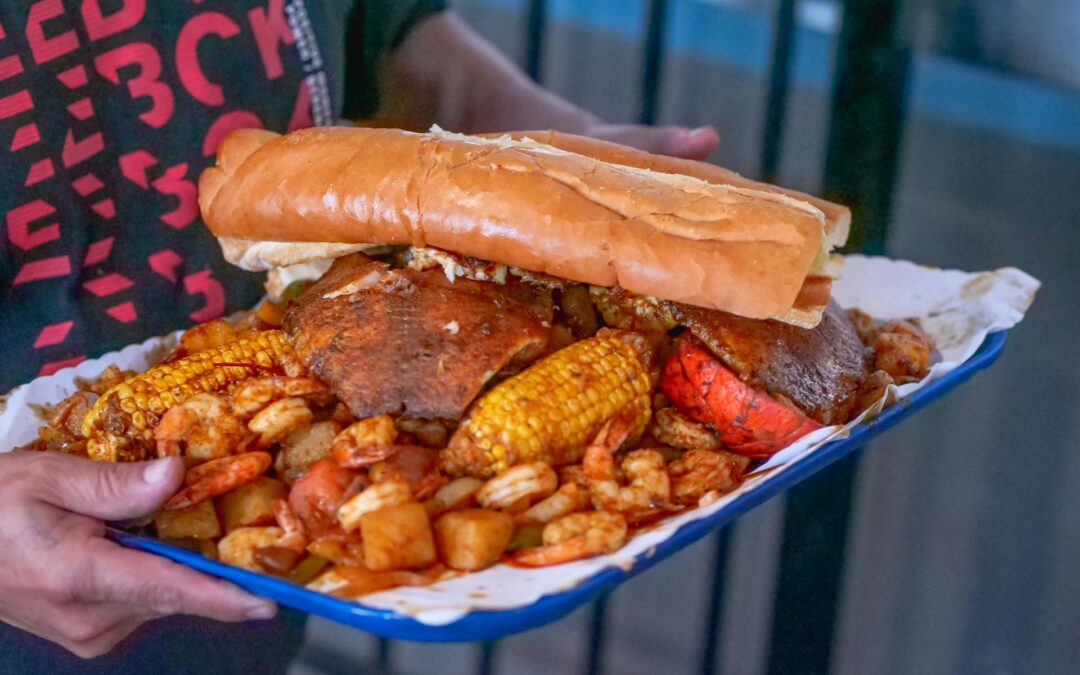The question of whether or not you can cook dressed crab often arises, particularly for those new to handling this delicate seafood. The answer, while seemingly straightforward, requires a nuanced understanding of what “dressed crab” entails and the implications for its subsequent preparation. Simply put, while you shouldn’t re-cook dressed crab in the traditional sense, there are certainly ways to incorporate it into dishes that involve heating, enhancing its flavor and texture in a safe and delicious manner.
Understanding Dressed Crab: A Culinary Clarification
Dressed crab refers to crab meat that has already been cooked, shelled, and typically cleaned of any unwanted parts. This process significantly reduces preparation time for the home cook, offering a convenient shortcut to enjoying this luxurious seafood. However, this pre-preparation has implications for how you handle it in the kitchen, primarily regarding further cooking methods. Understanding this distinction is key to preventing overcooking and ruining the delicate flavor and texture of the crab meat.
The Implications of Pre-Cooking
Because dressed crab has already undergone the cooking process, subjecting it to prolonged or high-heat cooking will result in dry, rubbery, and unappetizing crab meat. The delicate protein structure has already been set, and further heat only leads to further denaturation. This doesn’t mean it’s inedible; rather, it requires a gentler approach. Think of it like reheating leftovers—you wouldn’t fry a previously cooked steak; instead, you’d opt for a more delicate method.
Safe Handling and Storage of Dressed Crab
Before exploring ways to use dressed crab in warmer dishes, it’s crucial to emphasize the importance of proper handling and storage. Dressed crab, like any seafood, is highly perishable. Always purchase it from reputable sources, ensuring it’s chilled properly. Once you’ve brought it home, store it promptly in the refrigerator, ideally in an airtight container, and consume it within a few days for optimal freshness and safety. Pay close attention to any unusual smells or discoloration which could indicate spoilage.
Preventing Bacterial Growth
Maintaining the cold chain is critical to preventing bacterial growth. Avoid leaving dressed crab at room temperature for extended periods. The bacteria responsible for foodborne illnesses thrive in warm environments, so quick refrigeration is paramount. If you’re uncertain about its freshness, it’s best to err on the side of caution and discard it rather than risk food poisoning. Fresh, high-quality crab meat will have a sweet, delicate aroma.
Incorporating Dressed Crab into Warm Dishes: Gentle Cooking Techniques
While you shouldn’t boil or fry dressed crab, there are several ways to incorporate it into dishes that involve heat without compromising its delicate texture and flavor. The key is to use gentle heat and short cooking times, primarily focusing on warming the crab meat through rather than cooking it further. This approach allows you to incorporate it into a variety of dishes while retaining its integrity.
Adding Dressed Crab to Sauces and Stews
Adding dressed crab to a simmering sauce or stew towards the very end of the cooking process is an excellent way to incorporate it into a warm dish. The heat will gently warm the crab meat, infusing the sauce with its rich flavor, without making it tough. A creamy tomato sauce or a light bisque are perfect complements for the delicate sweetness of crab meat. Remember to stir gently to avoid breaking up the delicate flakes.
Stir-fries and Other Quick Cooking Methods
Stir-fries, if executed quickly, can also work well with dressed crab. Add the crab meat during the final seconds of cooking, ensuring it only warms through. The intense heat of the wok should be brief, and the focus should be on the vegetables and sauce already cooking. Avoid prolonged exposure to high heat to prevent the crab meat from drying out.
Pasta Dishes with Gently Heated Crab
Pasta dishes are another excellent option. Combine your cooked pasta with a light sauce, and then gently fold in the dressed crab just before serving. The residual heat from the pasta and sauce will warm the crab, making it a luxurious and flavorful addition to the dish. This method prevents overcooking and preserves the delicate texture.
Recipes Featuring Gently Heated Dressed Crab
Numerous dishes showcase the versatility of dressed crab without requiring recooking. Consider a creamy pasta with lemon and herbs, where the crab is added at the end. Alternatively, a delicate crab and avocado salad with a light vinaigrette can be gently warmed by incorporating it into a warm tortilla or baked potato. Even a simple omelet or frittata can be elevated with the addition of gently heated crab meat.
Recipe Example: Crab and Asparagus Risotto
A creamy risotto offers a perfect vehicle for dressed crab. Prepare your risotto according to your favorite recipe, ensuring it’s cooked al dente. Just before serving, stir in your dressed crab, along with a squeeze of lemon juice and some fresh herbs like chives or parsley. The residual heat from the risotto will gently warm the crab, allowing its flavor to meld perfectly with the creamy rice. The delicate asparagus provides a beautiful counterpoint.
Conclusion: Mastering the Art of Dressed Crab Handling
While you cannot and should not cook dressed crab in the traditional sense, understanding its pre-cooked nature allows you to safely and creatively incorporate it into a wide variety of warm dishes. Prioritizing safe handling, proper storage, and gentle heating techniques ensures you will enjoy the full flavor and exquisite texture of this premium seafood. Remember, preserving its delicate nature is key to culinary success. Mastering this nuance will elevate your cooking and impress your guests.

